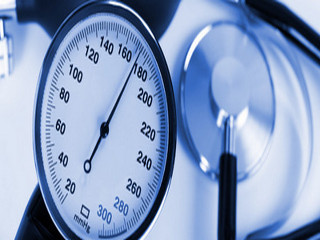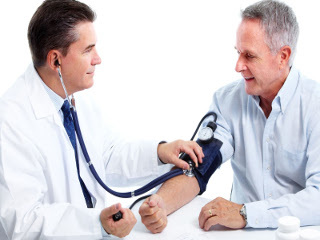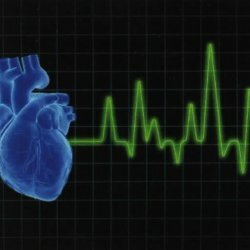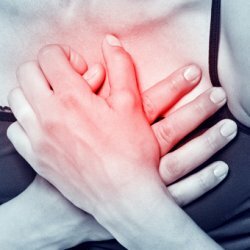Normal human pressure: what is upper and lower blood pressure, how to measure

Content:
- Upper and lower pressure
- Blood pressure units
- Systolic and diastolic blood pressure
Blood pressure is an individual physiological indicator that determines the force of squeezing blood against the walls of blood vessels.
In many ways, blood pressure depends on how a person's heart works and how many beats per minute it can do.
Normal human pressure is an indicator that can change depending on the physical activity on the body.
Thus, with active training or strong emotional experiences, a person's normal pressure can increase and go beyond the norm.
For this reason, it is recommended to measure blood pressure indicators in the morning, when the person is not worried or overstrained physically.
The ideal pressure indicator at rest is 110/70. Reduced pressure starts from 100/60. Increased (hypertension) - from 140 \ 90.
The critical (maximum) indicator is considered to be 200/100 or more.
A person's normal blood pressure can also change after physical activity. If the heart is coping with its functions, then the change in blood pressure is not a deviation. Thus, after sports activities, a person's blood pressure may rise to 130/85.
There are factors that have a significant effect on the normal pressure (including intraocular, intra-abdominal, etc.) of a person:
- A person's age and general health. It is important to know that existing diseases (especially chronic pathologies of the kidneys, heart, venereal or viral diseases) can significantly increase blood pressure.
- The presence of diseases that can thicken the blood (diabetes mellitus).
- The presence of progressive abnormalities in pressure (hypertension, hypotension).
- The condition of the heart and the presence of diseases in him.
- Atmosphere pressure.
- Thyroid hormone levels and menopause in women.
- Hormonal disruptions in the body that constrict arteries and blood vessels.
- General elasticity of the vascular walls. In elderly people, blood vessels wear out and become brittle.
- Availability atherosclerosis.
- Bad habits (smoking, drinking).
- The emotional state of a person (frequent stresses and experiences are negatively reflected in the normal pressure of a person).
Normal blood pressure differs somewhat in women, adult men, and children.
In the event that a person has failures in this indicator and problems with jumps in blood pressure, he needs urgent medical attention and medical treatment.
In addition, the pulse rate also plays an important role, since the blood pulse is inextricably linked with venous pressure.
Normal blood pressure in humans: upper and lower pressure
Before considering what the upper and lower blood pressure is, here is the WHO classification of blood pressure.
There are such stages of high blood pressure according to WHO:
- The first stage is accompanied by a stable course of hypertension, without deterioration in the work of internal organs.
- The second stage involves the development of pathologies in one or two organs.
- The third stage affects not only the organs, but also the body systems. In addition, the following degrees of blood pressure are distinguished:
- The borderline state, in which the indicators are not more than 159/99.
- Second degree - moderate hypertension (179/109 and more).
 Normal blood pressure in a person is a relative concept, since for each individual (separate) organism there are certain normal parameters of the tonometer.
Normal blood pressure in a person is a relative concept, since for each individual (separate) organism there are certain normal parameters of the tonometer.
Before you understand what a person's normal blood pressure is, it is important to find out what the upper and lower blood pressure is.
Not everyone knows what upper and lower blood pressure is and is often confused. In simple terms, the upper or systolic pressure is an indicator that depends on the frequency of contraction and the strength of the myocardial rhythm.
Lower or diastolic pressure is an indicator that reveals the minimum pressure during the decrease in the load (relaxation) of the heart muscle.
What should be the blood pressure by age and gender?
In men, the norms are:
- At 20 years old - 123/76.
- At 30 - 130/80.
- V
50-60 years - 145/85. - More than 70 years - 150/80.
In women, normal blood pressure readings are as follows:
- At the age of 20, −115/70.
- At 30 - 120/80.
- At 40 years old - 130/85.
- V
50-60 years - 150/80. - More than 70 years - 160/85.
As you can see, blood pressure indicators increase with age in both men and women.
Normal blood pressure in a person is inextricably linked with his pulse, which can also indicate various diseases and pathologies in the body (especially in the kidneys and blood vessels).
The pulse itself is nothing more than periodic contractions, which are associated with the oscillation of blood vessels when they are filled with blood. With reduced vascular pressure, the pulse will also be weak.
Normally, at rest, the pulse of a person should be
There are different heart rate rates for people of different age categories:
- For children from one to two years old - 120 beats per minute.
- Children from three to seven years old have 95 strokes.
- Children from eight to 14 years old have 80 strokes.
- Adolescents and young people have 70 strokes.
- The elderly have 65 strokes.
Normal pressure in a person during pregnancy does not go astray until the sixth month of bearing a child. After that, due to the influence of hormones, blood pressure may increase.
In the event that the pregnancy proceeds with deviations or pathologies, then the jumps in blood pressure may be more noticeable. In this state, a woman may experience a persistent increase in pressure indicators. At the same time, she is recommended to register with a therapist and go to the hospital under the supervision of a doctor.
In what units is blood pressure measured: tips for measuring blood pressure
Before considering the units in which blood pressure is measured, one should understand the rules of the procedure itself for establishing blood pressure indicators.
There are such medical recommendations for measuring pressure:
- The person should take a sitting position with support on the back.
- Before measuring pressure, it is not recommended to physically overexert yourself, smoke, eat, and take alcoholic beverages.
- It is necessary to use only a working mechanical device for changing blood pressure, which will have a normalized scale.
- The person's hand should be at the level of his chest.
- During the procedure, you cannot speak or move.
- In measuring the pressure of both hands, you need to take a break of ten minutes.
- The pressure should be measured by a doctor or nurse. A person on his own will not be able to accurately determine his pressure.
 Not everyone knows in what units blood pressure is measured and what the "mm Hg" readings mean. Art. ". In fact, everything is simple: these units of measurement of blood pressure mean millimeters of mercury. They show on the device how high or low the blood pressure is.
Not everyone knows in what units blood pressure is measured and what the "mm Hg" readings mean. Art. ". In fact, everything is simple: these units of measurement of blood pressure mean millimeters of mercury. They show on the device how high or low the blood pressure is.
After we figured out in what units blood pressure is measured, we will give the main reasons for deviations from the norm.
Pressure disorders in the body can develop for a variety of reasons. It can be physical overwork, starvation, or simple stress that greatly affected the person's condition. Usually, in this state, the indicators themselves stabilize, when the body returns to normal, the person eats, rests and sleeps well.
A more serious cause of high blood pressure can be progressive diseases, such as vascular atherosclerosis, diabetes mellitus, acute viral or infectious diseases. In this state, a person may suffer from sudden jumps in blood pressure, as well as obvious signs of hypertension.
Another common cause of a failure in blood pressure is a sharp vasoconstriction caused by hormonal influences, as well as emotional stress.
Taking certain medications, heart disease, bleeding disorders and excessive physical activity can also affect the failure in this indicator.
Improper nutrition and malfunctioning of the endocrine system usually have a negative effect on blood pressure in both young and elderly people.
Difference between systolic and diastolic pressure: norm and deviation
Blood pressure has two main indicators:
- Systolic.
- Diastolic.
There is a significant difference between systolic and diastolic pressure. The norm of the upper (systolic pressure) is determined by the level of pressure in the blood of a person at the moment of the strongest (limiting) contraction of the heart.
Thus, the rate of systolic pressure directly depends on the frequency of heartbeats and the number of its contractions.
There are factors that affect the rate of systolic pressure:
- Right ventricular volume.
- The frequency of vibrations of the heart muscle.
- A measure of the stretching of the walls in the aorta.
 The rate of systolic pressure is 120 mm. rt. Art. Sometimes it is called "cardiac", but this is not entirely correct, because in the process of pumping blood, not only this organ is involved, but also the vessels.
The rate of systolic pressure is 120 mm. rt. Art. Sometimes it is called "cardiac", but this is not entirely correct, because in the process of pumping blood, not only this organ is involved, but also the vessels.
The norm of diastolic pressure depends on the level of blood pressure at the moment of maximum relaxation of the heart. Thus, the norm of diastolic pressure is 80 mm Hg.
Therefore, there is a rather significant difference between systolic and diastolic pressure.
At the same time, the norm is still individual for each person, depending on the state of health, age and gender.
High blood pressure or hypertension (hypertension) is usually found in older people. This disease is considered very dangerous because it can lead to a stroke, that is, rupture of a vessel in the brain.
Such a deviation can develop for the following reasons:
- Overweight person (obesity).
- Severe nervous tension, frequent stress and psycho-emotional instability.
- Chronic diseases of internal organs.
- Sedentary lifestyle.
- Diabetes.
- Drinking alcoholic beverages.
- Smoking.
- Improper nutrition.
- A person's genetic predisposition to this disease.
During hypertension, a person suffers from terrible headaches, weakness, shortness of breath, dry mouth, heart pain and weakness.
In this state, the patient needs to be provided with urgent care and see a doctor until the disease has caused dangerous complications. It is also important to identify the root cause of hypertension, and together with high pressure to treat the factor that provoked its appearance.
Hypertensive crisis - This is a very dangerous condition in which blood pressure rises sharply. In this state, the human nervous system and internal organs are affected. There is a high risk of stroke and heart attack.
A hypertensive crisis can be detected by echocardiography and blood pressure measurement. Its causes can be the intake of alcohol, strong physical activity, the intake of certain medications, as well as the progression of diseases of internal organs or systems. To stop the attack, it is prescribed drug Proglycem.
Hypotension is a condition in which a person has low blood pressure. In this case, the patient will feel severe weakness, nausea, dizziness.
This condition can be caused by:
- Anemia.
- VSD.
- Heart attack.
- Prolonged fasting.
- Diseases of the adrenal glands.
Partial use of site materials (no more than 30% of the content of the article) is allowed only with a hyperlink on www.med88.ru, full use of the article (more than 30% of the article content) is possible only with written permission edition.



